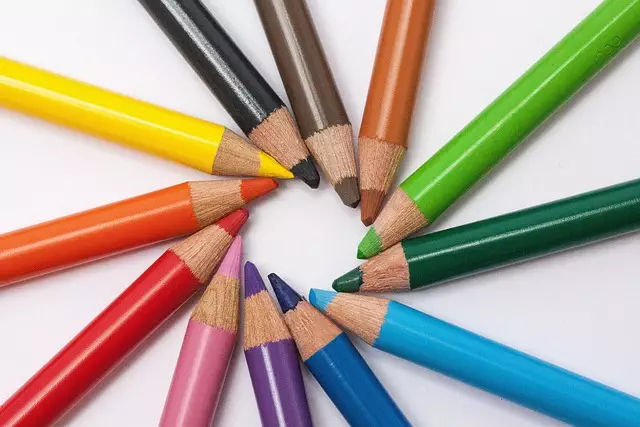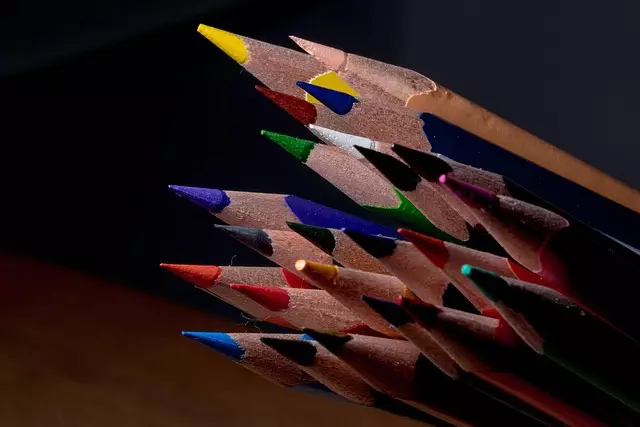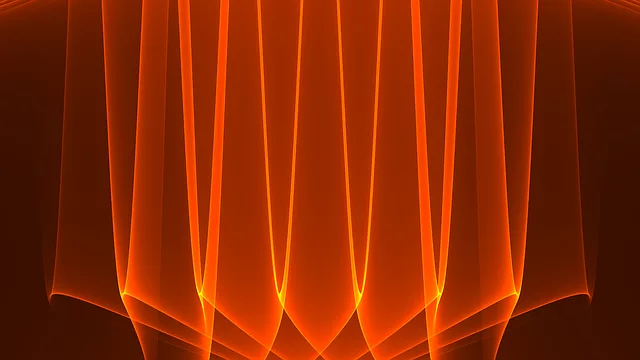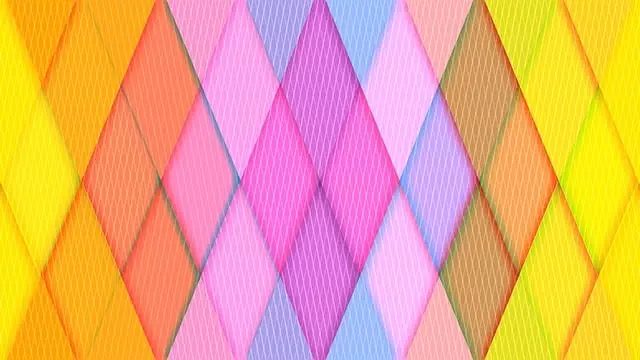Graphic Design has evolved from traditional methods to a modern, digital discipline, driven by technology like Adobe Creative Suite. This transformation has democratized design, fostering diverse creative communities and enriching cultural influences. The digital age offers advanced tools for precision and experimentation, keeping graphic design dynamic and at the forefront of visual communication. Today's landscape balances minimalism and vibrant color palettes, with typography as a crucial element for effective visual storytelling. Integrating interactivity enhances user experiences, while sustainability is increasingly central to responsible design practices. Startups leverage branding strategies and graphic design to stand out in competitive markets. The future holds immense potential with AI, AR, and VR, promising to revolutionize how audiences engage with visual content.
Modern graphic design solutions are transforming industries, from branding to digital marketing. This article takes a comprehensive dive into the evolving landscape of graphic design, exploring its historical roots and the digital tools that have revolutionized creativity. We analyze trending visual aesthetics, the power of typography, integration of interactive elements for enhanced user experiences, sustainable design practices, and effective branding strategies for startups. Additionally, we peek into the future, predicting innovations set to shape the field. Discover how these modern solutions are redefining visual communication.
The Evolution of Graphic Design: A Historical Perspective

Graphic Design has evolved dramatically over the centuries, transforming from simple manual art to a complex digital discipline. Historically, graphic designers relied on pen and paper, or even physical textures and objects, to create visual representations. The advent of computers and digital technology revolutionized this field, introducing powerful software tools that enabled designers to experiment with various styles, effects, and layouts with ease. This evolution has not only expanded the creative possibilities but also redefined the role of graphic design in modern society.
Today’s graphic design solutions leverage advanced software like Adobe Creative Suite, allowing designers to create intricate illustrations, manipulate images, and craft compelling visual narratives. The digital age has also democratized design, making it accessible to a broader audience through user-friendly design platforms and online resources. This accessibility has fostered a rich exchange of ideas, cultural influences, and diverse perspectives, shaping the dynamic and ever-changing landscape of Graphic Design.
Digital Tools and Software Revolutionizing Design Process

The digital age has brought about a revolution in the realm of graphic design, empowering designers with an array of innovative tools and software that streamline the creative process. Modern Graphic Design Solutions now incorporate cutting-edge technology, enabling designers to transform their workflows. From vector graphics software like Adobe Illustrator to photo editing programs such as Photoshop, these digital applications have become indispensable assets for professionals in the field.
These advanced tools offer not only precision and efficiency but also open up a world of possibilities. Designers can experiment with 3D modeling, create intricate illustrations, and manipulate images with ease. The ability to collaborate remotely on design projects has further transformed the industry, fostering a more connected and diverse creative community. As technology continues to evolve, graphic designers are equipped to push boundaries, ensuring that their work remains fresh, dynamic, and at the forefront of visual communication.
Minimalism vs. Vibrant Colors: Trending Visual Esthetics

In contemporary graphic design, the visual aesthetics landscape is a captivating tug-of-war between minimalism and vibrant color palettes. Minimalist designs, characterized by clean lines, simple forms, and restricted color schemes, have long been a staple in the industry. This approach emphasizes functionality and clarity, making it ideal for conveying information efficiently. However, as design trends evolve, we witness a growing appreciation for vibrant colors that inject energy and emotion into visual communication.
Vibrant color palettes, once considered too eclectic for professional design, are now embraced for their ability to capture attention and create memorable visual experiences. Graphic designers are experimenting with bold hues, rich textures, and dynamic contrasts to craft captivating compositions. This shift towards vibrancy does not diminish the allure of minimalism but rather highlights the diverse ways in which graphic design can express itself, catering to different brand identities, audiences, and communication objectives.
Typography's Role in Modern Design Communication

Typography plays a pivotal role in modern graphic design, acting as the visual backbone of communication. It’s not just about arranging letters; it’s an art that influences how information is perceived and absorbed by viewers. In today’s digital landscape, where content abounds, strategic typographic choices can capture attention, convey emotions, and enhance readability across various platforms.
Effective use of typography in graphic design involves selecting the right fonts, adjusting sizes and line heights, and considering layout to create a harmonious and impactful visual narrative. It bridges the gap between ideas and audiences, making complex concepts accessible and memorable. This precision in typographic design contributes significantly to the overall aesthetic appeal and effectiveness of modern graphic design solutions.
Integrating Interactive Elements: Enhancing User Experience

In modern graphic design, integrating interactive elements has become a powerful way to enhance user experience and captivate audiences. By incorporating digital interactivity into static designs, designers can create dynamic and engaging experiences that foster user involvement. Interactive components such as clickable buttons, hover effects, and animations not only make websites and applications more visually appealing but also facilitate better user navigation and interaction.
This shift towards interactive graphic design allows designers to convey complex information in simpler, more accessible ways. By providing users with intuitive controls and immediate feedback, interactive elements encourage exploration and discovery, ultimately improving user satisfaction and retention. As the field of graphic design continues to evolve, embracing interactivity is essential for creating impactful and memorable visual experiences that resonate with modern audiences.
Sustainable Design Practices: Eco-Friendly Graphic Approaches

In the realm of modern graphic design, sustainability has emerged as a crucial consideration, with eco-friendly approaches gaining prominence. Designers are increasingly adopting sustainable design practices to create visually appealing and responsible artwork. This shift towards greener methods involves using recycled materials, choosing biodegradable inks, and implementing digital techniques to reduce paper waste. By embracing these innovations, graphic designers can minimise their environmental footprint while still delivering impactful visual solutions.
Sustainable graphic design also extends beyond material choices. It encourages designers to optimise layouts, reduce unnecessary elements, and employ energy-efficient production processes. This not only cuts down on resource consumption but also makes designs more accessible and affordable for a wider audience. As the industry continues to evolve, embracing these eco-conscious practices will likely become the norm, ensuring a beautiful and responsible future for graphic design.
Branding Strategies for Startups: Stand Out in a Crowded Market

In today’s digital era, startups face an uphill battle to stand out in a crowded market. This is where effective branding strategies and graphic design come into play. A well-designed brand identity can be a startup’s best asset, helping it cut through the noise and capture its target audience’s attention. Graphic designers work with startups to create visually appealing logos, color palettes, typography, and layout that convey the company’s essence and values. By understanding the startup’s unique selling proposition, designers can craft compelling visual narratives that resonate with customers, fostering a strong emotional connection.
Moreover, graphic design solutions extend beyond initial brand creation. Designers assist startups in developing consistent branding across various platforms, from websites and social media to marketing collateral and product packaging. This consistency reinforces the brand’s message, builds recognition, and establishes a solid foundation for long-term success. By leveraging powerful visual storytelling, startups can differentiate themselves, engage their audience, and thrive in competitive markets.
Future of Graphic Design: Predictions and Innovations

The future of graphic design is brimming with predictions that hint at a revolutionary shift in how we create and interact with visual content. With advancements in technology, artificial intelligence (AI) and machine learning are set to play a significant role. AI-driven tools can automate repetitive tasks, allowing designers to focus on creative direction and strategic thinking. This enhances productivity while also enabling more complex and unique design solutions.
Another trend that’s gaining traction is the integration of augmented reality (AR) and virtual reality (VR). These immersive technologies offer endless possibilities for interactive graphic design experiences. From creating captivating digital advertisements to designing virtual environments, designers will have new tools to engage audiences in innovative ways. Expect to see even more seamless connections between physical and digital spaces, reshaping how we perceive and interact with visual communications.
